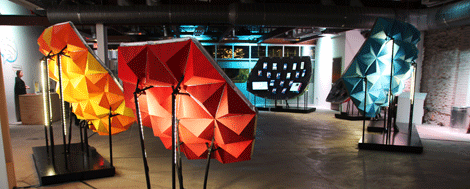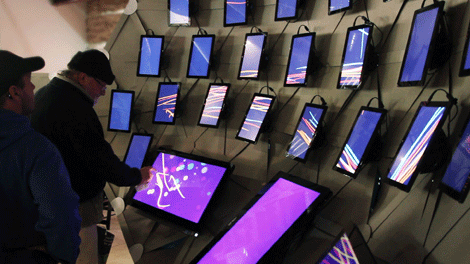
Building an art installation, called ‘Soft Array’, from 80 inter-connected Windows 8 devices might seem a little out of our purview, but it gave us a chance to view the credentials of Microsoft’s Surface Pro tablet.
First the installation: The array links up, allowing developers in a short space of time to develop apps that operate across all the devices. Plonked into a Microsoft event today in Cannes, France, visitors will be able touch its screens that are all linked to work in real time together.
It’s a great deal of fun – such as viewing the solar system through the ‘Universe’ app, which uses distributed processing to control mass particle flow across the 80 Surface Pros.

What we were excited to see is the latest edition’s abilities for professional designers, especially with the increase in virtualisation of 3D design tools.
The screen has been developed with Wacom technology, allowing a full hand to be rested on the screen for natural sketching with a very accurate stylus and use of its 10-point multi-touch technology.
For a device destined to be a portable design tool there’s the current development work to allow a ‘mini-cloud’ to be set up over a number of devices, allowing a central source to hold control over a network of devices.
For a large company it can allow for an entire number of devices to be upgraded in one go, or if one were to go missing after post work drinks, for sensitive content to be remotely deleted.
In the instance of the installation’s smart apps, it could even mean realtime collaborative design on a number of devices working on the same concept, either in the same office or the other side of the world.
As the device runs full Windows 8, and has some decent grunt from an Intel i5 Processor with Intel’s HD Graphics 4000, 4GB RAM Dual Channel Memory, it can allow the device to access 3D data in the likes of PLM systems on the shop floor, or even through concept sketching into small 3D modelling.
As virtualisation grows more prevalent, we’ll be more excited to see what can be done with lightweight devices.






